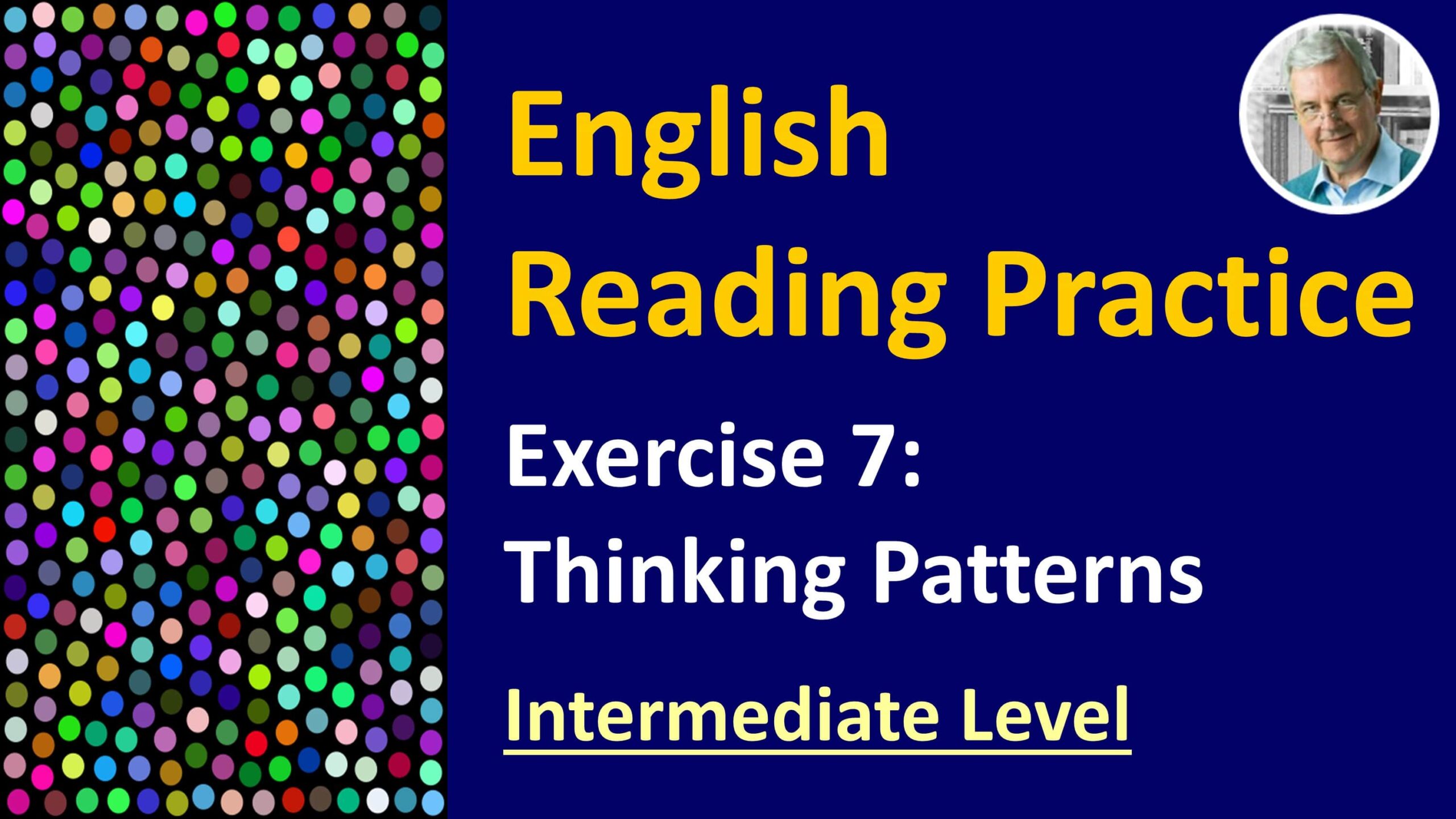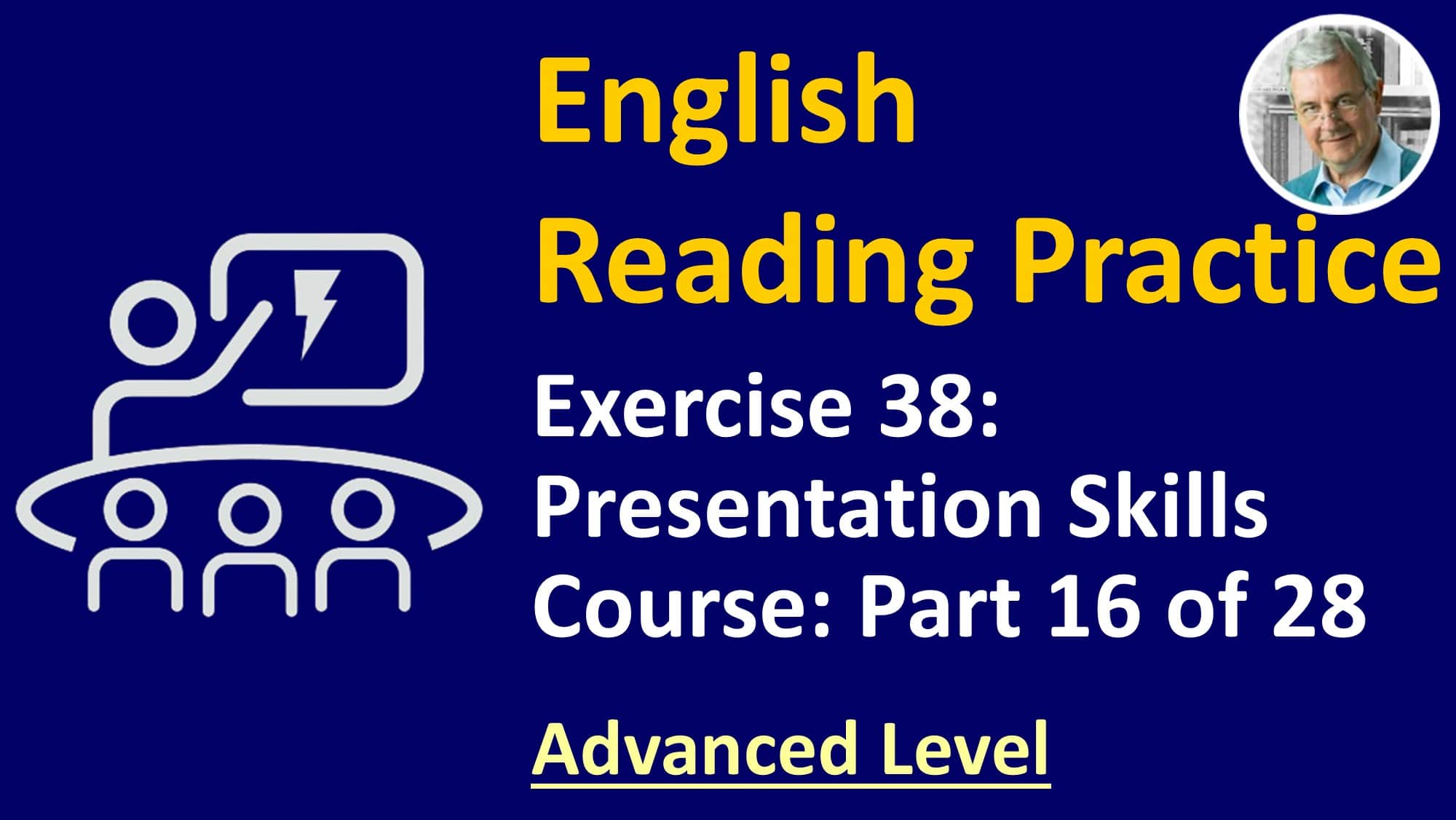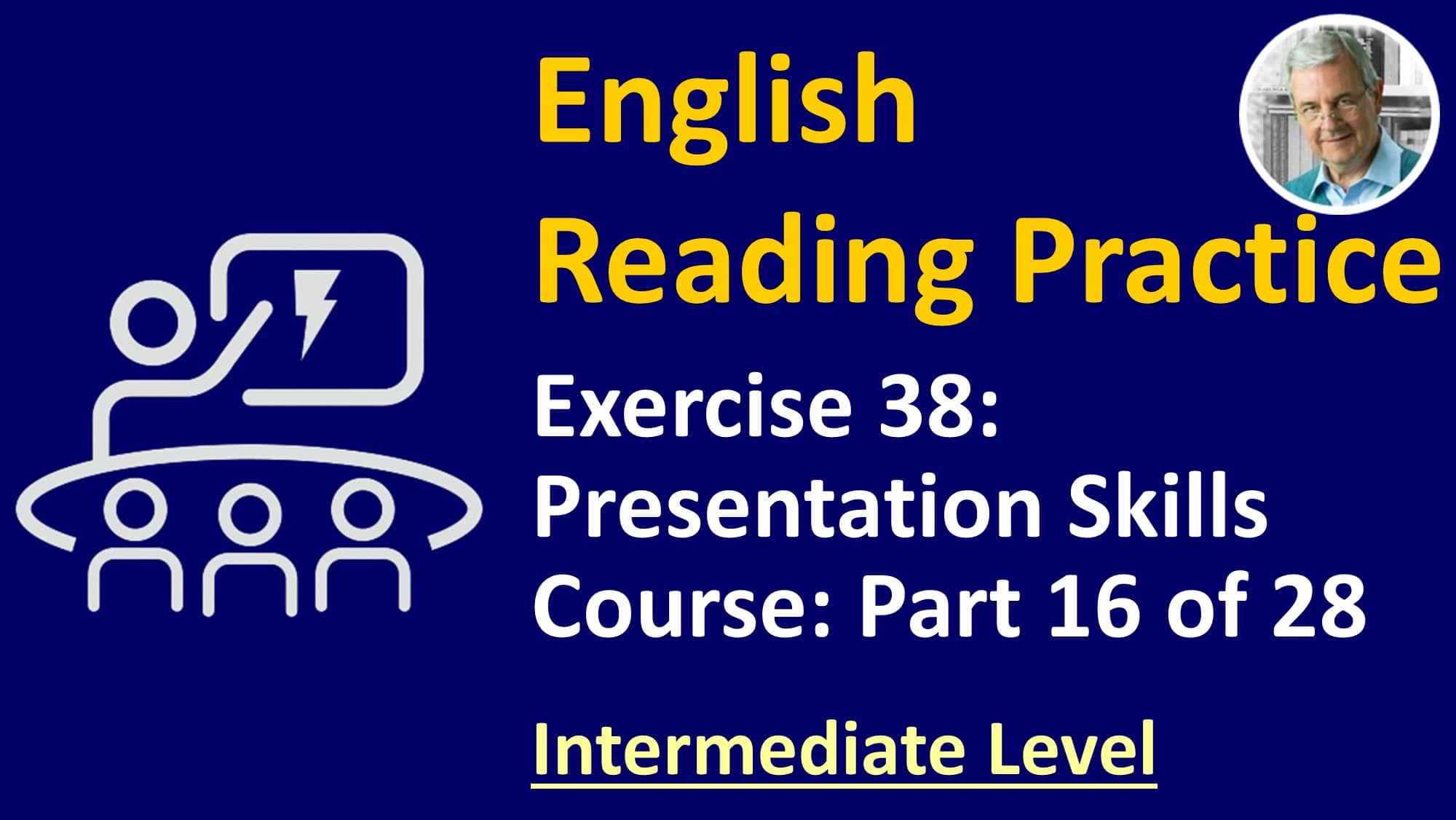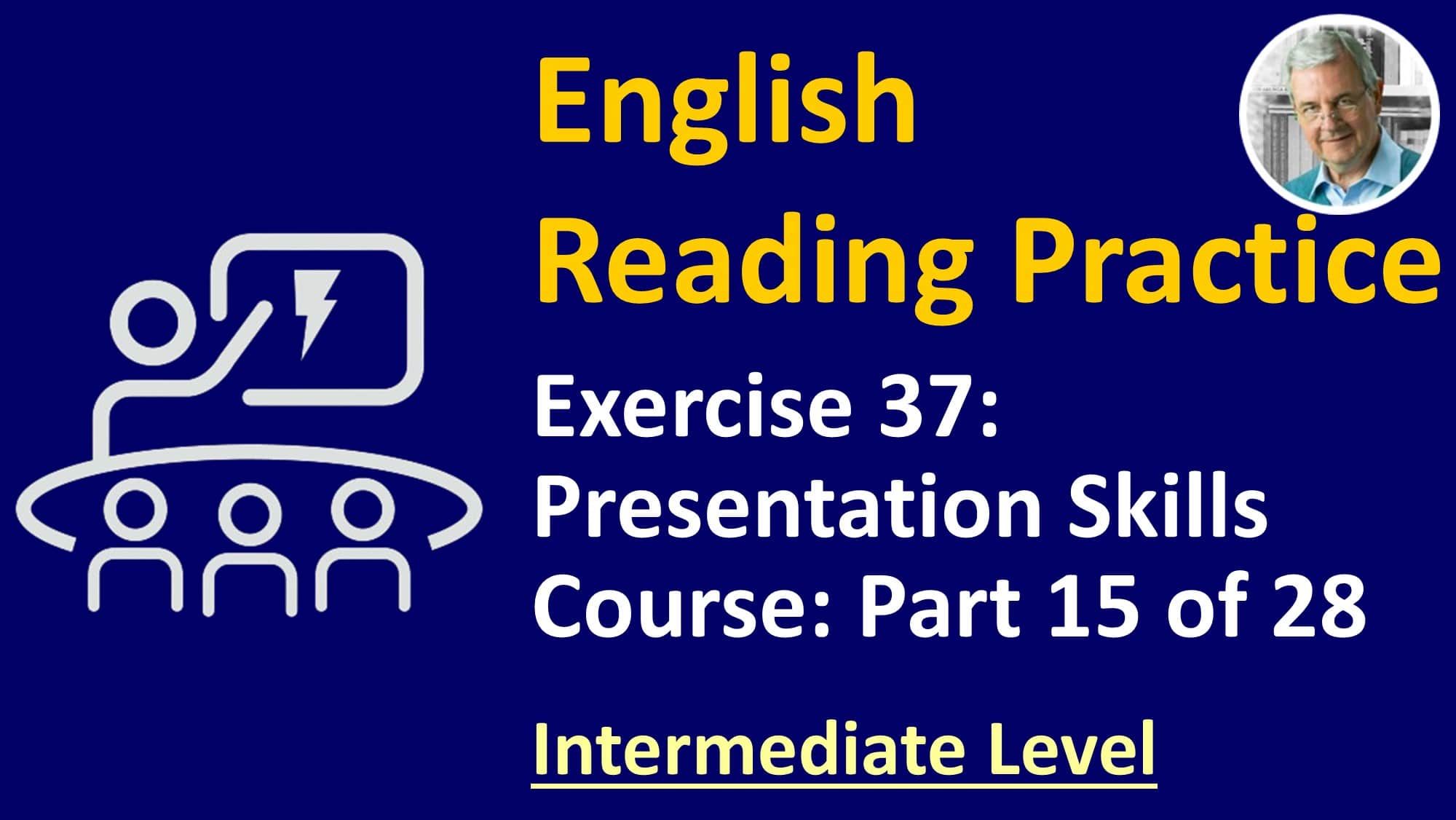ENGLISH Reading Exercise #8 (Advanced): How to Get Ideas
ENGLISH Reading Exercise #8 (Advanced): How to Get Ideas
Click Here for ENGLISH READING PRACTICE EXERCISES
This exercise has been created for English students who are at a beginner to advanced level. The pace of the reading is faster.
During this English reading practice session, you will read along with the teacher at the same time, with the teacher’s voice superimposed over their own, students start to self-correct in the areas of pronunciation and fluency, learning to read and speak in natural word groups.
English reading practice will certainly help you speak English fluently or at least great improve your English fluency.
Here is the transcript for “English Reading Practice Exercise 8 (Advanced)”
Exercise 6: Enthusiasm
Be sure to watch the introductory video to this playlist before doing this exercise.
Click on the link below in the Description . . .
(https://youtu.be/IOeaBha6dUU)
Instructions
- Turn up the volume so the teacher’s voice is loud.
- Read the words in red out loud at the same time as the teacher.
- Pay attention to the teacher’s voice intonation and the word groups.
- If you find the speed is too fast, go to the playlist and choose the intermediate version.
The text:
How to Get Ideas
It can be challenging to create new ideas. You can sit and ponder and meditate for hours without getting any inspiration or creative thought. Thankfully, there is an easier way! Borrow a technique or idea that has a proven track record from an unrelated industry and apply it to your task or problem.
Let us consider a prime example, Henry Ford and the motor car. By the time Henry Ford started making automobiles, there were thousands of mechanics working in small workshops, building motor cars. These mechanics needed a wide knowledge and expertise in how to use a vast variety of tools. In addition to needing highly skilled mechanics, building automobiles also required time as it was a time-consuming process. What separated Henry Ford from all the other auto makers? The assembly line method. Did Henry Ford invent the assembly line?
No, he borrowed the idea from another industry, an unrelated industry. He focused his attention on butchers and meat-packers in Chicago. He visited a meat-packing factory in Chicago and saw that each animal carcass moved along on an overhead rail. Each butcher remained in his assigned position and as the carcass passed in front of him, he cut off an individual piece of meat. They stood in one place, holding one tool. The whole process was a demonstration of organization, continuous flow, and efficiency.
Henry Ford immediately recognized an opportunity for his automobile business. He drew plans for a conveyor belt that carried car frames and parts from one mechanic to another. Each worker had his own spot and put a single piece on the frame with only the tools needed for that specific operation. Soon, Henry Ford was overseeing mass production of the automobile and other car makers soon adopted the same idea so that it became an industry standard.
The basic principles that Ford employed were: 1. The tools and workers should be placed in a sequence so that each component part should travel the least possible distance, 2. Have some kind of carrier to take the section to the next worker so a workman simply drops his part in the same place each time, and the part is then carried to the next worker in the line, and 3. The parts to be assembled should be delivered at convenient distances to the workers who need that component.
So if you are stuck for ideas, gazing into the air, hoping inspiration will follow, why not try Henry Ford’s method? Focus your attention on an unrelated industry that may face the same challenges you are struggling with, examine their methods and techniques, and borrow their ideas. Of course, we need to be realistic. This also requires effort and ideas are not just going to drop in front of you with no effort. However, concentrated attention on the problem or subject of focus will eventually yield results. Very often the greater the distance between the problem and the industry you are going to compare it with, can produce some of the best breakthroughs. So look outside your field or area of expertise. You may be amazed at the results!
That is the end of the reading.
Repeat this exercise many times until you can synchronize your reading with the teacher.
Practice other exercises in this playlist and see a major improvement in your English speaking fluency.
Has this video helped you? Hit LIKE now!
Continually IMPROVE YOUR ENGLISH by subscribing to this channel.
Hit the subscribe button NOW!
Click the bell icon and choose All to be notified when there are new videos!
Build A Powerful English Vocabulary with my FREE course on Udemy.
Go to: http://goodenglish.online
If you found this English Practice Reading Exercise helpful, be sure to check Exercise 6 (Advanced) which provides helpful information on enthusiasm:
ENGLISH Reading Exercise #7 (Advanced): Thinking Patterns





